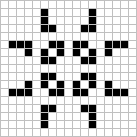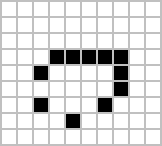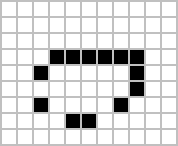This sandbox lets you experiment with Conway's Game of Life (but on a finite grid with periodic boundary conditions). Below is an $n\times n$ grid represents cells in the game, where each cell can be either "alive" (black) or "dead (white)." You can adjust the grid size by changing the number of "rows" and clicking the re-initialize button. Click on cells to toggle their states between alive and dead, then click run to see the cellular automata in action The Clear Board button clears the grid without changing the size of grid, while re-initialize redraws the board with $n$ number of rows..
For more details on the working of the Cellular Automata, scroll down the the next section.
For more details on the working of the Cellular Automata, scroll down the the next section.
Sandbox
Generation: 0
Few saved patterns
Update Rules for the Cellular Automata
- A live cell with 2 or 3 live neighbors remains alive.
- Death: A live cell with fewer than 2 (underpopulation) or more than 3 neighbors (overpopulation) dies.
- Birth: A dead cell with exactly 3 live neighbors becomes alive.
Still Lifes: Stable patterns that do not change over time (e.g., the "block" and "beehive").
Oscillators: Patterns that cycle through a series of states, returning to their original form after a fixed number of steps (e.g., the "blinker" and "toad").
Spaceships: Moving patterns that translate themselves across the grid over time (e.g., the "glider" and "lightweight spaceship").
Some patterns in Cellular Automata
 |
 |
 |
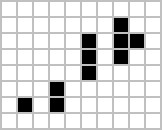 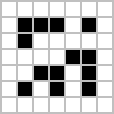
|

|







